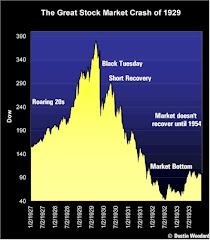There is an article on the front page of the Globe and Mail today called Ottawa targets public service pension plan for cutbacks.
Some of the highlights of the article include:
The generous pension plan enjoyed by federal civil servants is being targeted for possible cuts, including an end to early-retirement provisions for new hires.
... senior civil servants are also concerned that too many bureaucrats retire in their mid-50s, causing staff shortages that are set to worsen in coming years.
One of the most controversial aspects of the federal pension plan is the ability to retire with a full pension at age 55, after 30 years of service.
According to the Treasury Board, however, federal employees paid $1.2-billion into the plan in 2007-08, compared to the government's $2.6-billion share. That 32-per-cent employee contribution will go up, but only to 40 per cent by 2013.This report is a mixture of interesting statistics and policy recommendations about public sector pension plans. The information is gathered from the pension site of the Treasury Board. It is supplemented with information from a review done on wages in the Federal government. Although the information is not current, based on past trends the current salary base in the federal public sector is around $65,000 per year and the total compensation is close to $89,400. The average annual compensation for members in the RCMP service is estimated over $100,000 per year. Treasury Board Salary Review.
Retirement Tsunami
Canada has been aware of the demographic shocks coming from the retirement of the Baby Boomers. The PSI produced a report in 2005 called The Retirement Tsunami. In the report they stated that starting in 2007 more workers will be retiring than entering into the workplace. In 2010 they estimated that 370,000 workers will be riding off into retirement.
These numbers call into question the current retirement ages in Canada and specifically the retirement of the public sector with a much lower retirement age. The CFIB back these findings with a report called the Pension Predicament.
Fair Pensions For All
The Globe and Mail highlighted the contribution levels of taxpayers into the public sector retirement plans.
One of the key questions about the contributions is ... what is fair to all Canadians? Canadians have contributed $631 Billion into individual registered plans but $555 Billion into public sector employee plans.
NUPGE comments on Pension Assets in Canada
Canadians have access to the CPP but suffer reduced coverage by triggering their pensions early. If this is fair for taxpayers why should the public sector not play by the same rules? Is it wise to take early CPP?
Recommendations for Fair Pensions
- Public sector employees should play by they same rules as all Canadians. Basic retirement is age 65. If pensions are taken early they should be reduced to the same level as taxpayers. Ie. 30% reduction for pensions at age 60 or .5% per month before age 65. (Thanks to L Rob)
- Cap public sector pensions at a fair level. In the US two current electoral candidates have suggested that pensions in the public sector should be capped at $100,000 per year.
- Make all public sector pensions defined contribution plans. There is no reason taxpayers should be expected to fund into gold-plated defined benefit pensions when most will never have pensions near these levels.
The Montreal Gazette recently featured a three part pension series. The last article called for all Canadians to become involved in the debate. They pointed out that Pension Woes Wont Be Easy 'To Fix
But this is not just an issue for actuaries and civil servants. All Canadians - not just those between 60 and 65 - would help themselves by taking part in a full national discussion. The retirement you save may be your own.All Canadians need to educated and become involved in the discussion about the future of pensions in Canada.







